
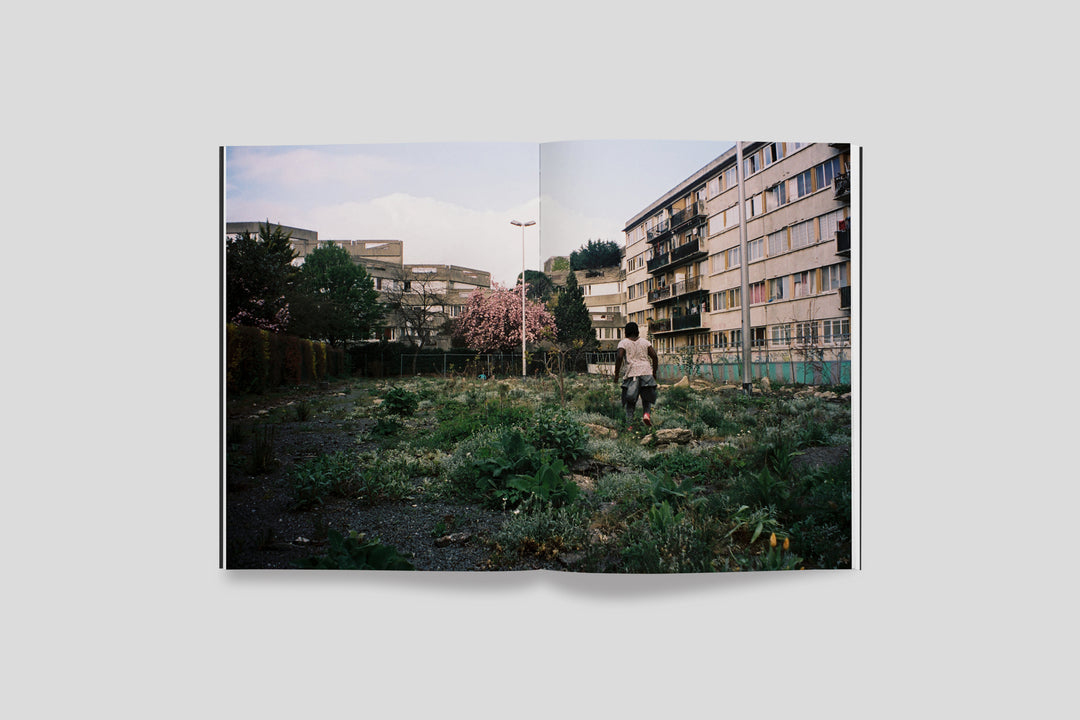

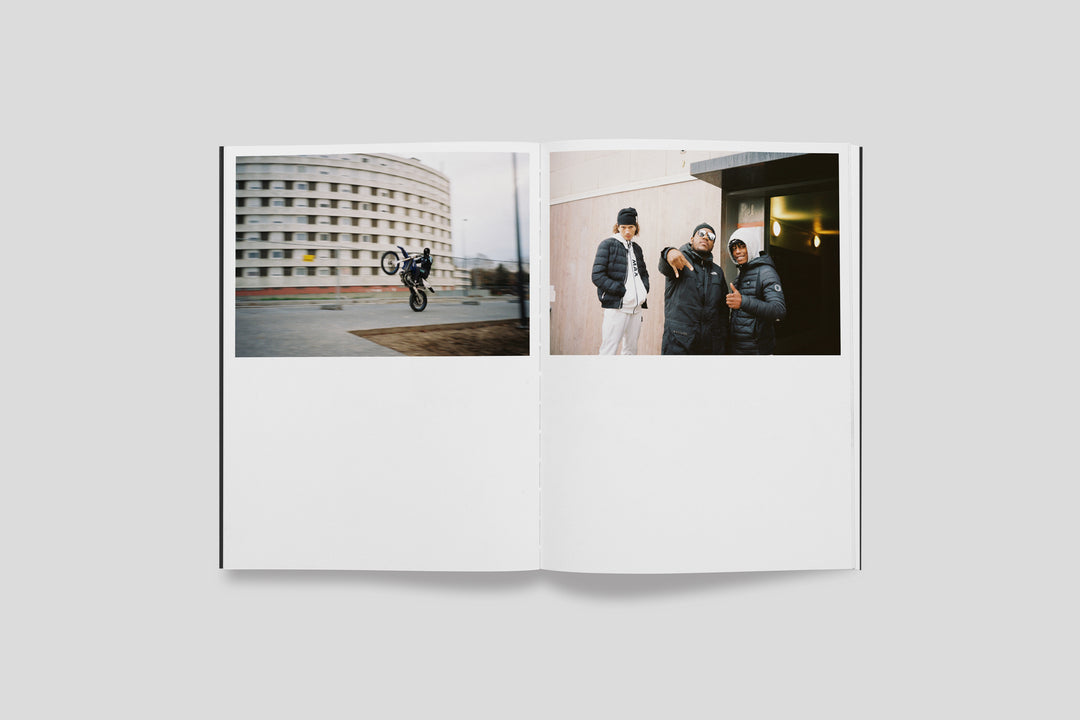

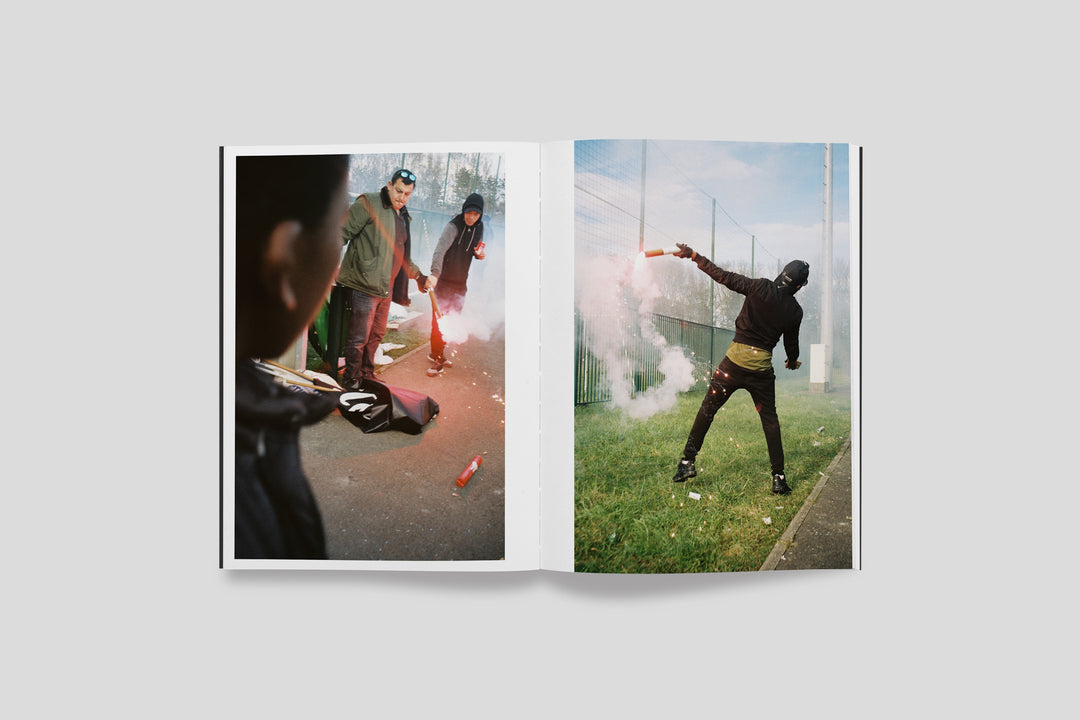

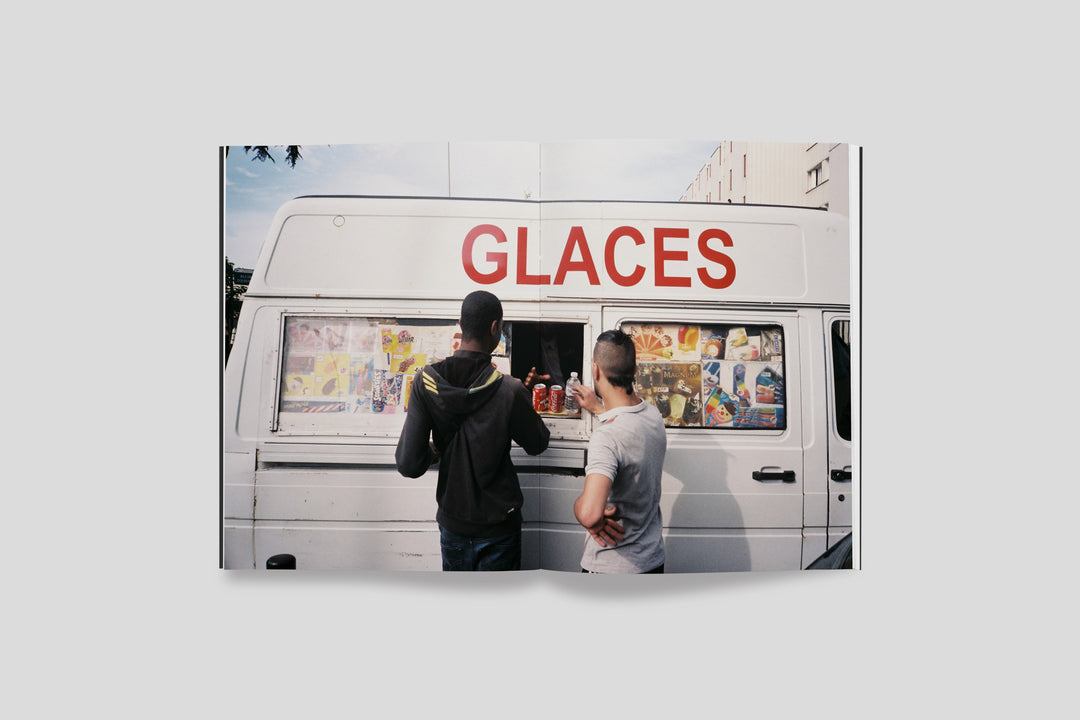
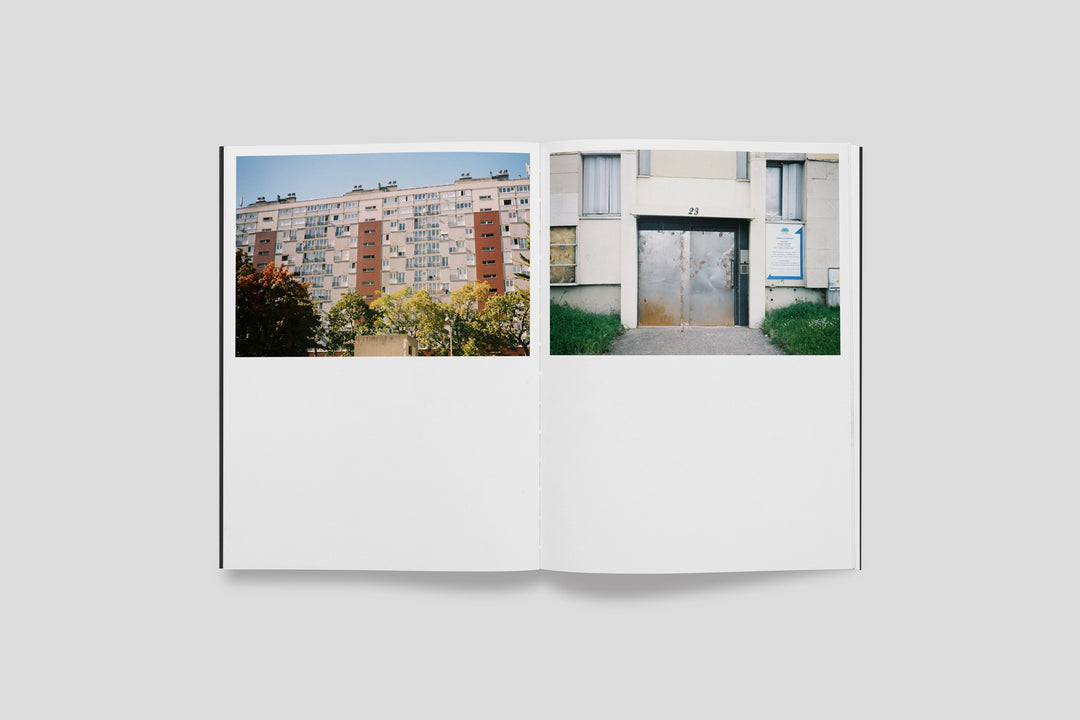
This book is Marvin Bonheur’s debut work, bringing together 10 years of photographs taken in the Seine-Saint-Denis department, near Paris, where he grew up. His gaze—sometimes tender, nostalgic, or critical—bears witness to his experience in this unique territory.
Born in August 1991, Marvin Bonheur grew up in what is often described as a “no-go zone,” a place where hope is scarce and the atmosphere heavy. Alongside his friends, he spent his youth playing and hanging out, but from an early age, he became aware of the negative perceptions tied to his identity and origins. As a child, he was revolted by the notion that the dream of success was out of reach for local kids, whose only goal seemed to be keeping their feet on the pavement.
His series is divided into three parts, with the book structured accordingly:
“Alzheimer”, the first chapter, delves into his memories, capturing key moments of his childhood and adolescence up until his departure at the age of 21. The photographs serve as snapshots of his memory, seeking to preserve and document the past.
The second chapter, “Thérapie”, explores the daily reality of today’s youth, denouncing injustices and demystifying the stereotypes of a culture often rejected by society. Bonheur gets up close to individuals, creating intimate portraits that reflect his growing attachment to “the forgotten.”
“Renaissance”, the final chapter, concludes the photographer’s quest for identity. It moves between the place that shaped him and the new perspectives he is now exploring. These photographs, taken during his early work with sportswear brands, mark a shift toward more aesthetic and deliberate photography. At this stage, Marvin begins to feel more legitimate as a suburban artist, asserting his ability to represent a subject that is deeply tied to his own identity.
pp, 220 x 295 mm
With bilingual texts
Published by the Cé éditions
Texts: Marvin Bonheur & Mohamed Bourouissa